Toyota RAV4 Review
Toyota’s RAV4 is often called a “cute ute.” For die-hard SUV drivers, the label is sacrilege, implying that the small four-by-four is a downsized, de-butched truck. To paraphrase the B52’s, WELL IT ISN’T! Like many so-called crossovers, Toyota “Recreational Active Vehicle with 4WD” is a hatchback on stilts that looks something like truck and drives something like a top-heavy station wagon. Despite these drawbacks, the RAV4’s runaway success has green-lighted the entire crossover genre. The latest version tells us all we need to know about the niche’s immediate future.
The first RAV4 looked like a small Toyota 4Runner. Generation two traded an off-roader’s stance for a distinctly lower and broader posture, belying a solid commitment to paved roads. V3 completes the transformation from macho lite to suburban grocery-getter. The new RAV4 is noticeably larger than its predecessors in every dimension. By stretching its clean lines, the RAV loses its dainty demeanor and gains… nothing much. The wrap-around taillights and blacked out B-pillars tells the tale, reflecting a conscious decision to sacrifice adorability on the altar of clean, sleek, inoffensive and, ultimately, boring design.
Other than our tester’s metrosexual color designation (White/Bisque/Taupe instead of Bleached Bone/Desert Sand/Savannah Clay), the RAV4’s only exterior faux pas is ergonomic. The tailgate hinges are on the right of the back; the door swings open to the left. It’s obviously a carry-over from the Land of the Rising Sun, where people drive (and park) on the left hand side of the road. The layout forces American soccer moms to the street side of the vehicle to access their shopping bags, rather than accessing them from the safety of the curb.
The RAV4’s interior runs from the sublime to the ridiculous. The major controls are as ergonomic as a fine writing instrument. The second row seats are equally well designed; they adjust forwards and backwards to steal or bestow legroom, and recline. The rearmost space rocks. Optional third row seats, fit for two children, fold flat into the floor. Two convenient floor panel compartments lie just fore and aft of the third row seat. An easily adjustable system of hooks, rails, and netting serve as useful rigging for any cargo configuration.
On the other hand, the driver’s seat does not scoot back far enough for my 32” inseams. Two of the ten cup holders are inaccessibly positioned in the rear doors. The cowling over the instrument binnacle is oddly shaped. Rather than a classic arch, Toyota’s designers created an unnatural arch-on-arch – sort of like an extraneous pimple growing on top of a boil. It looks okay from the driver’s perspective. From any other angle, it’s just about as ugly as it sounds.
The RAV4’s optional 3.5L V6 engine is the vehicle’s must-have feature. With variable valve timing, the rev-happy little monster produces 269hp. The sprint from rest to sixty takes a fraction over six– yes six– seconds. You’d be hard pressed to find a family hauler of any description in the RAV4’s price range ($25,168 as tested) so willing to flare its wheel arches and just go. Even more surreal, a RAV4 so-equipped still manages to deliver real world mileage in the high twenties.
Once you’ve achieved significant velocity, the RAV4’s front strut / rear double wishbone suspension keeps the ride Camry smooth while suppressing lean and pitch. When pushed hard through the twisties, the [optional] Yokohama 225/65 R17 Geolandar rubbers howl like Little Richard on Viagra. The helm also evokes a quick “Good Golly Miss Molly;” give it some and the electrically-powered steering system immediately intervenes to counteract torque steer. Road feel disappears.
Toyota maintains the RAV4’s SUV facade by offering optional Electronic On-Demand Four Wheel-Drive (all wheel drive or AWD to the rest of the world), with Hill Start Assist Control and Downhill Assist Control modes. The literature claims the RAV4 is “designed to meet most off-road driving requirements.” But not all. While a skid plate under the engine bay protects the vital bits from gnashing rocks, other not-so-vital but important, low-hanging components (e.g. the exhaust system) remain vulnerable. And despite the RAV4’s impressive off-road armory, 7.5” of ground clearance give it roughly the same terrain-crossing abilities as your average car.
For what it is, for what it’s generally expected to do, the RAV4 is an excellent machine. It sets new benchmarks in nearly every area for this classless class of vehicle, including design, comfort, power, ride, safety and economy. But the RAV4 is too civilized to rough it and too tall and heavy to waft it. Perhaps crossovers like the RAV4 are vehicular deprogramming for SUV owners who never should’ve bought a truck. Either that or a very agreeable sort of rehab for drivers on their way back to cars.
More by William C Montgomery
Latest Car Reviews
Read moreLatest Product Reviews
Read moreRecent Comments
- 3-On-The-Tree I have a 2009 C6 Corvette LS3 and the only major repair that I have done on it was replace the radiator. Besides usual plugs, wires oil etc. And yes those tires are expensive as well.
- 28-Cars-Later We had a red 2003 with less than 100 miles in late 2004/5ish and kept it till the end AFAIK. I do recall being told we had about $28,000 in at the time (about $43,6 in 2023 Clown World Bux). I don't ever recall anyone retail even looking at it, and it lived in the showroom/garage."It's an automatic that just had the linkage repaired and upgraded"This really doesn't bode well. Maybe there's a upgrade I'm simply not aware of so one could tune the 3rd Gen LM4 for higher power but messing with it isn't making me smile because now I know its no longer factory or somehow it broke and with such low miles I'm equally concerned.
- Analoggrotto With Kia Hyundai you are guaranteed to have the best Maintenance and Service experience in the industry. Complementary diagnostics, open book fees schedules and adherence to published rates with no attempts to tack extra work on are part of the HMC Gold Standard of Service. Recalls are the lowest in the industry but when you bring your Hyundai Genesis Kia vehicle in for Feature Improvement, rest assured that it will be taken care of to the highest pentagon standards, fully free of charge with no pressure for paid work or service unless requested. Hyundai Kia have the highest levels of customer ATP loyalty in the industry and Service is key to the best after sales experience.
- MaintenanceCosts In Toyota's hands, these hybrid powertrains with a single motor and a conventional automatic transmission have not been achieving the same kind of fuel economy benefits as the planetary-gear setups in the smaller cars. It's too bad. Many years ago GM did a group of full-size pickups and SUVs with a 6.0L V8 and a two-motor planetary gear system, and those got the fuel economy boost you'd expect while maintaining big-time towing capacity. Toyota should have done the same with its turbo four and six in the new trucks.
- JMII My C7 isn't too bad maintain wise but it requires 10 quarts of expensive 0W-40 once a year (per GM) and tires are pricey due size and grip requirements. I average about $600 a year in maintenance but a majority of that is due to track usage. Brake fluid, brake pads and tires add up quickly. Wiper blades, coolant flush, transmission fluid, rear diff fluid and a new battery were the other costs. I bought the car in 2018 with 18k in mileage and now it has 42k. Many of the items mentioned are needed between 20k and 40k per GM's service schedule so my ownership period just happens to align with various intervals.I really need to go thru my service spreadsheet and put track related items on a separate tab to get a better picture of what "normal" cost would be. Its likely 75% of my spend is track related.Repairs to date are only $350. I needed a new XM antenna (aftermarket), a cargo net clip, a backup lamp switch and new LED side markers (aftermarket). The LEDs were the most expensive at $220.



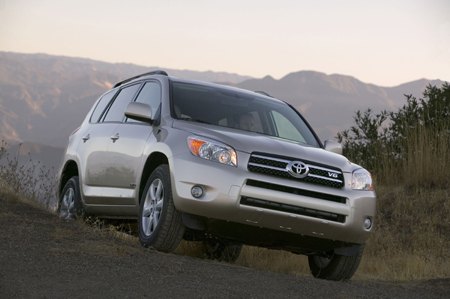


















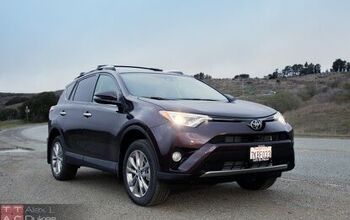
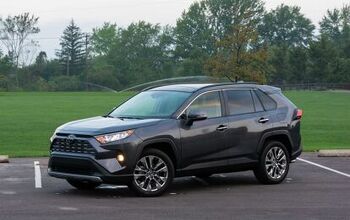
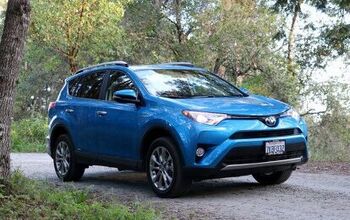
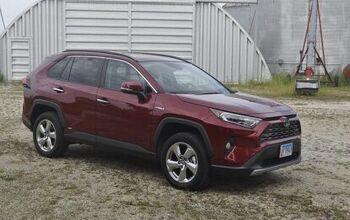











Comments
Join the conversation
My girlfriend bought a RAV4 and it seems very nice. My main complaint would be that being 6'3" my knees are blocked in the front passanger seat by the extended glovebox. If I could only remove that bottom piece of the glovebox as it is anoying on long trips. I have more knee room in my little Grand Am. Also I agree with the reviewer that it would have been nice if the front seats could go back a little more.
I don't agree with William who mentioned about the cowling over the instrument binnacle being oddly shaped. I find the arch over arch design to be really cool. It makes it unique and different compared to the classic look. the classic arch design actually is kinda boring as they look the same on all models of cars. On the other hand I find the car to be really reliable. I have the 09 V6 model and it is just amazing. I have close to 400,000km and it's still running trouble free. other than general regular scheduled maintenance work no major service was needed. I expect the car to last a long time.